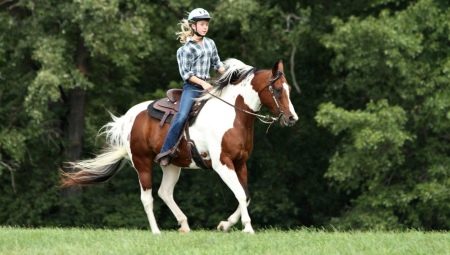Horse riding, horseback riding - sounds tempting, right? Who at least once did not want to try himself in the role of a rider, rally with a smart and noble animal, draw his energy? Surely such a desire came to everyone. But doubts, fears, stereotypes can interfere with the fulfillment of desire. It's time to figure it out!
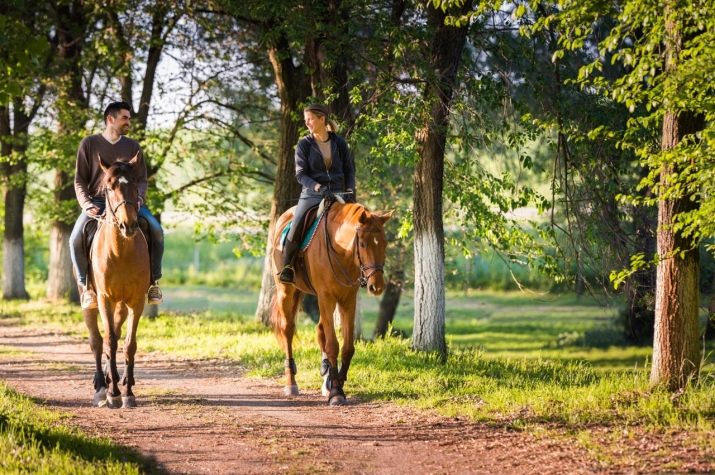
The benefits and harms of horse riding
Horseback riding has no clear age restrictions; all of them are concentrated within the framework of the reasonable. If a person is old enough to evaluate the trainer's commands and execute them, if in general he is healthy, he can sign up for horse riding lessons. If this is an elderly person, but there are no serious health problems, he can also start horse riding.
Typically, these classes are of interest to adolescents and people under the age of 40-50. The closer a person is to pre-retirement age, the lower his desire for such vivid physical activity.
How horseback riding affects the body:
- all muscle groups come into tone - this can be compared with a natural massage;
- posture improves, as horse riding is demanding on this point;
- the vestibular apparatus is trained, which is useful at any age;
- blood circulation improves;
- stress and tension go away (more than once there were cases when horseback riding brought a person out of depression);
- self-confidence develops.

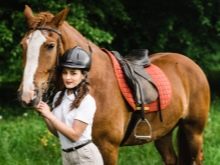

Riding as a hobby is one thing: not very frequent walks in the park under the supervision of an instructor, and equestrianism is another.It requires a more serious approach, children and adolescents should seek help from a pediatrician that they can deal with this sport.
If you just like to ride in the sleigh in the winter, this is nothing more than fun, leisure. Of course, it cheers up (which in itself is not bad). Riding requires physical activity, high concentration. If a person has chronic diseases, then in the stage of exacerbation it is impossible to ride horses. If a child or adult has asthma, horseback riding is also a big question. An allergy to horse dandruff also puts an end to riding.
Winter sleigh rides today can be called exotic. If you are afraid of horseback riding, and the interaction with the animal is interesting, you can start with sledding. The instructor will tell you how to do it right - what can and cannot be done, how to follow safety precautions.
The main thing is to make sure that you sit in a working sled, that the organization providing this service has the necessary documents.
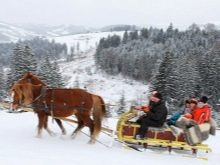
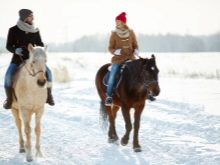
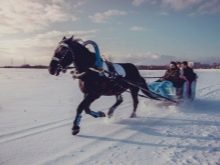
Kinds
If we are talking specifically about horse riding, and not about sledding, when you, as a passenger, are pulled by a harnessed sled, can identify and describe the types of riding.
- Dressage. This is the art of controlling animals in various paces - piaffe, passage, gallop, lynx, step, etc. Competitions in these disciplines are held in a small area according to special programs. Dressage is a sport that can be seen at the World and European Championships, at the Olympic Games.
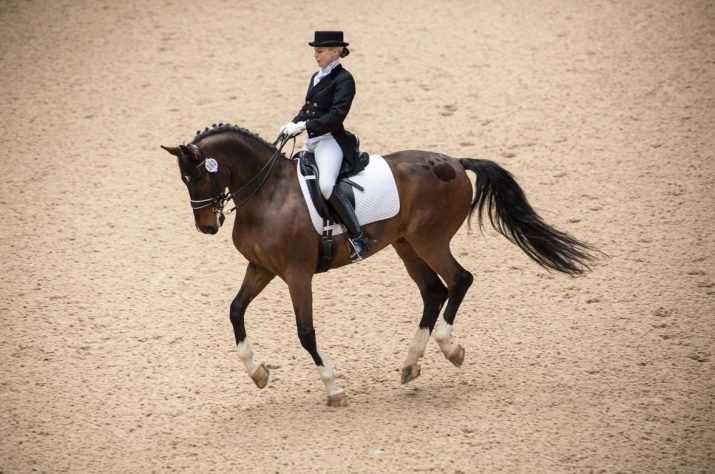
- Jumping hippik. This is the name for overcoming obstacles (artificial), which is from 6 to 13. It can take place in the following categories: relay race, hunting, upper class, etc. They included show jumping in the Olympic program, as well as in the pentathlon.

- Eventing, eventing. Eventing includes overcoming obstacles, ring riding and field trials. Biathlon does without field riding.
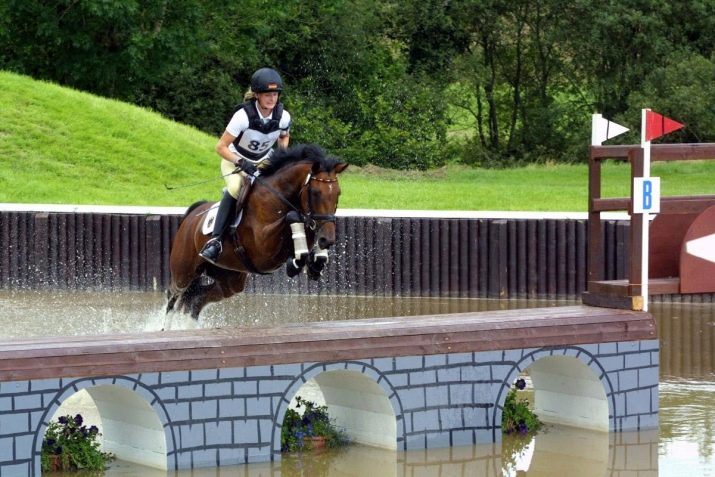
- Horse racing. They are divided into subspecies - there are smooth, there are barrier, there are national, steeplechase, cross-country.
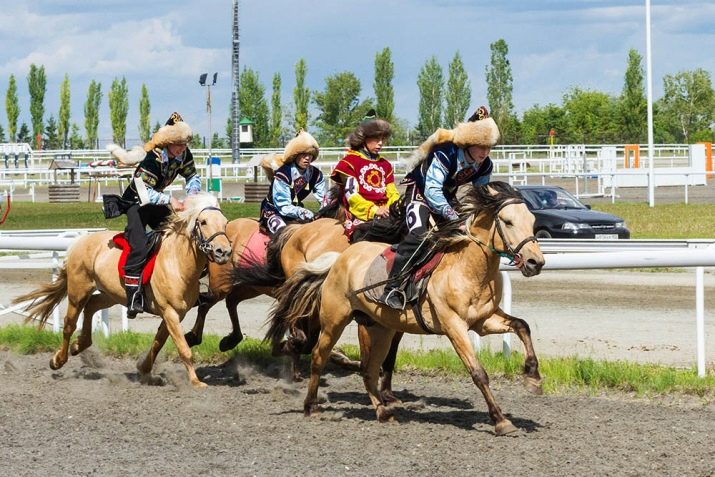
- Horse hunting. This is the name of the parfors ride, which takes place on fields up to 35 km long. Be sure to use hounds and live animals in these competitions, or sometimes artificial tracks.

- Horse runs. These are endurance tests, refer to multi-day competitions.
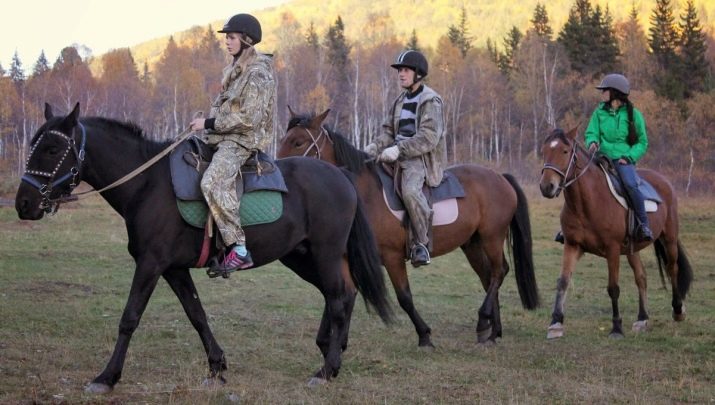
These are far from all competitive species. But if you are not interested in sports, but ordinary horseback riding - for health (physical and emotional), for pleasure - and to manage a horse with a trot of trot in front of the jury is not in your plans, you should focus on other points. This is preparation for classes, mastering the basics of riding, the ability to establish contact with an animal, etc.

At what age can I start to ride?
If it is planned that the child will start professionally engaged in equestrian sports (that is, pursuing the goal of sporting great achievements), you need to go to the sports section at an early age. Usually children come to equestrian sport. at 5–6 years old, even before school. These are the years most suitable for acquaintance with an animal, for establishing emotional contact, as well as learning the basics of riding. Purposeful training, namely sports, starts from 8 years old. A child by this age is already responsible and disciplined, without which horse riding is simply impossible.
You can introduce your child to animals from 3-4 years old: take him on excursions to the stable, contact zoos, and to competitions. This nourishes the baby with new experience, instills in him an interest in interacting with the animal. But it is important not to overdo it: the child should genuinely enjoy communication with the horse, a natural interest should be formed.
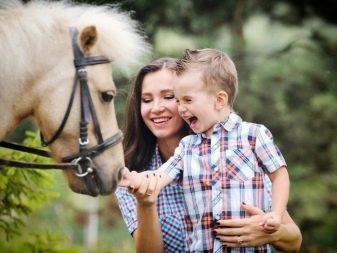

Horse riding is prohibited for both children and adults with diagnosed cardiovascular diseases. If a person has a heart defect, he has a history of stroke or heart attack, hypertension, horseback riding, alas, will have to be replaced with something less active.
Diseases of the musculoskeletal system is another taboo. Sometimes horseback riding leads to curvature of the lower limbs. If you fall from a horse, the risk of a fracture in a child with fragile bones increases significantly. Exacerbated by riding and ailments of the pelvis, kidney disease - that is due to rhythmic shaking. It is not necessary to give the child equestrian sports with a phobia of large animals, with a phobia of height. This is not the case when a step towards fear helps the fight against fear. Most likely, the neurological and psychological problems of the child will only worsen.
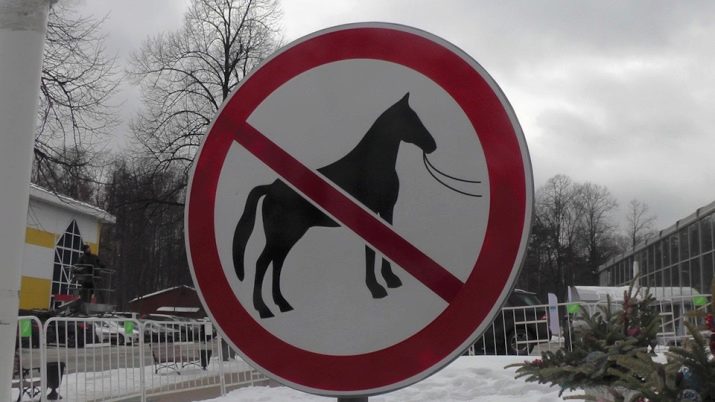
Basic Riding Teaching Rules
Classes will bring a lot of positive impressions if you are trained by an experienced professional instructor. First you get acquainted with the theory (abstract description), then you put it into practice. Learning from scratch is always difficult, you have to take lessons. But today schools and riding sections are actively opening, where a training program has been developed for beginners of any age.
Learning to and how to interact with the animal, and the ability to protect themselves (horseback riding, riding, above all, should be safe).

Equipment
You can’t do without overalls for skiing. She - and this is very important - should not hamper the movements of the rider. Need trousers and a comfortable vest. It can be a little reckless to start right away with professional clothes - only when your classes become permanent, the first successes begin, you will get special breeches, etc. Women's and men's clothes will not have big differences. In principle, attaching great importance to clothing for amateur training is not worth it. This competition has a dress code, it is too early for a beginner to think about it.
Training shoes should only have a flat sole in order to eliminate the risk of entanglement in the stirrup. A helmet is an indispensable element of equipment, without it you can not ride a horse.
Equipment for the animal is the concern of the equestrian club:
- bridle;
- saddle;
- bandages;
- girth;
- gel or mechovushka;
- walking blanket.
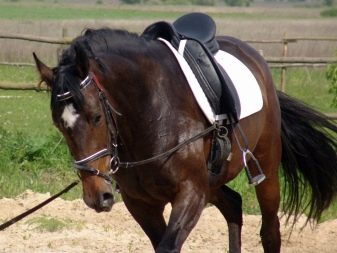
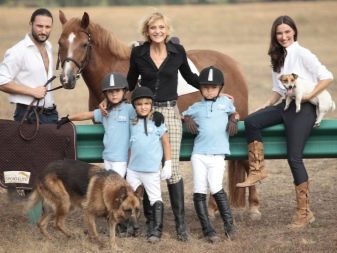
Experienced riders can compete without a saddle, but for beginners this is simply unimaginable.
Getting to know the animal
If the horse is training, then in most cases it does not experience aggression towards the new rider. One can say that such animals have developed professional loyalty.
Acquaintance itself takes place in several stages.
- Gently, without fear, pat the animal by the neck, stroke, pat a little. Horses like such caresses, they are tuned to a welcome wave.
- If the animal behaves carefully, even aggressively, there may be several reasons. Either the horse is unwell, or she is so trained to behave with strangers, or she is spoiled. If the animal is negative, his ears are pressed back or become a house, his legs are tight, his tail and head are raised. The horse needs to be stroked the same way, talk to her gently. She will relax and lower her ears - this means she has made contact.
- Feeding is only possible if the instructor has authorized it. You don’t have to bring anything (especially secretly).
- Turn your back to the horse, press against the neck of the animal, throw the occasion back.

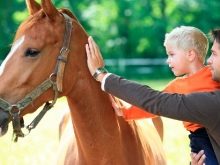

Clutching the neck for a horse is considered a manifestation of affection. Yes, and the person himself removes his stiffness, tension in meeting. Due to this contact, as experts say, a person goes into self-doubt, chronic fatigue, and neurosis is corrected.
How to sit down?
When landing, the rider can grab the mane at the withers - the horse will not hurt, there are no nerve endings in this zone. But you don’t need to hold onto the saddle - there is a risk of it turning over. Tighten the occasion, take it with the mane.
Put your left leg in the stirrup, make a bounce with a hold on the mane, throw the second leg. Put her in the stirrup, tighten the reins. In the saddle, a man is held by the hips of his legs. Sharp motive motions should be avoided.The animal begins to move if the rider cheers him up with his feet.
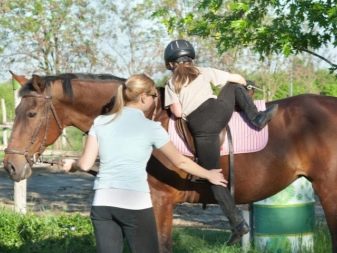
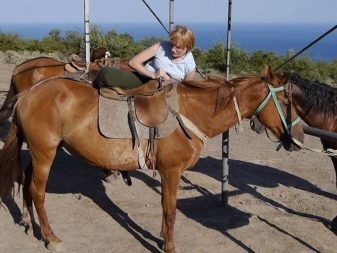
How to stay in the saddle?
Sit upright, straighten your back, fasten the motive in your hands, and fix the rein. To correctly ride, shoulders must be kept straight. If you lean forward - this is not true, if the chest is protruding strongly forward, it gives out tension, which is also not true. The back also should not be bent.
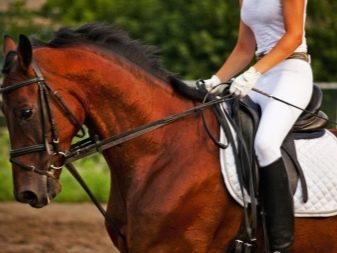

How to stop?
Stopping with taut reins (and this seems to many to be the only way to stop) is painful for animals. Correctly stop the horse foot and body.
The algorithm is as follows:
- leave your hands on the occasion, deviate, shift back in the saddle;
- squeeze your hips, squeeze your horse with your knees;
- tighten the occasion a little, just to prompt the animal about your intentions.
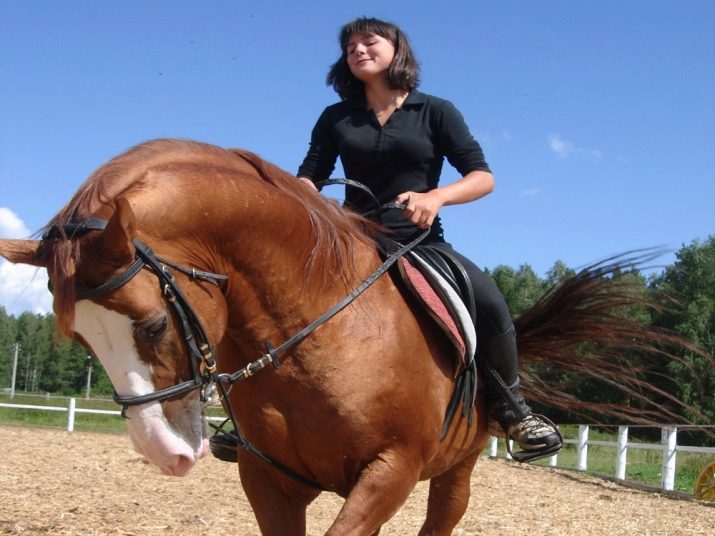
When the animal stops, do not forget to pat it on the neck. The horse will take this as gratitude. When descending from the horse, you should hold on to the mane, take your leg out from the stapes and throw it to the other side.
Turns
Light body movements help experienced riders make turns. The pros have proven skills. To, for example, turn the horse to the left on the go, the rider sips a bit on the left side, while on the right he weakens it. The right leg at this moment is pressed against the body of the horse, as if pushing the animal in the right direction. Turning to the right involves the same actions, only mirrored.
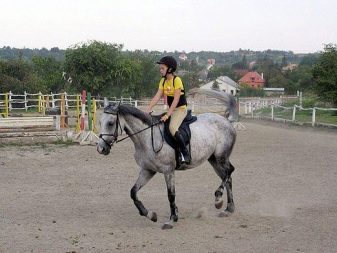
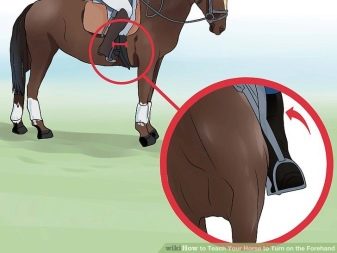
Safe fall
Unnatural behavior of the horse is also possible, it can buck, bear. The horse is not immune from the fact that he accidentally stumbles and falls with the rider. Therefore, a person has to learn how to fall correctly.
You can’t panic! Try to relax, fall to one side, and as soon as you fall, roll to the side opposite to the horse. This warns against a dangerous hoof strike.


Distance
Each rider must observe the distance. Between horses in motion, should be about 3-4 meters. Animals should not be close to each other, and the rider strictly monitors this. It is impossible to say how they will react to close contact: horses can get scared, show aggression. Riders that move towards each other must leave with their left shoulders.

What to do after training?
If the horse is very hot after training, you just need to walk at a slow pace. Removing the saddle from her, affably pat on the back - this action is also necessary to optimize blood circulation.
You cannot drink a horse after riding! It will cool down in 30–40 minutes, and only after that the instructor will give the horse a net with hay and not a lot of warm water.
Next, you should take care of your ammunition, clean it, wipe it. The metal parts of the equipment can be washed with water, while the leather ones are simply wiped.
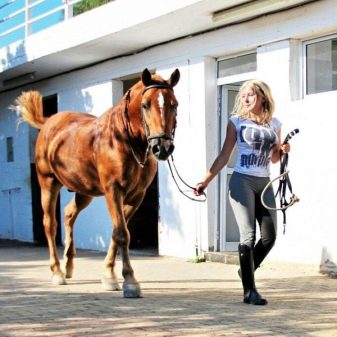
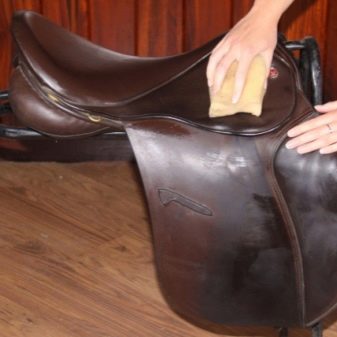
Common mistakes
Of course, an inexperienced rider rarely keeps from mistakes. There are those that are very common.
- Tension, fear, fear. Horseback riding alone is a pleasant process that gives pleasure. But if a person is clamped, he will not feel it. If the rider is unsure, the animal may gallop.
- Lack of equipment and equipment. If for some reason you don’t put on a helmet, one lesson is enough to face the most serious herbs. This risk is inappropriate.
- Reeling on the hands. This is dangerous because if the horse unexpectedly incurs, you risk breaking your arms. And if there is a loss from the saddle, then you will hang and may fall under the hooves.

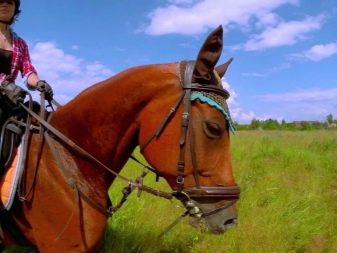
A lot of people involved in equestrian sports, there is a huge surge of strength, cheerfulness, good mood after class. Caring, friendship, closeness to nature - this is also the merit of horse riding.
Follow all the instructions of the instructor, do not allow yourself to take risks, do not go to the records. Only reasonable training will make horse riding a pleasant and safe part of your life.

To learn how to ride a horse, see the next video.
